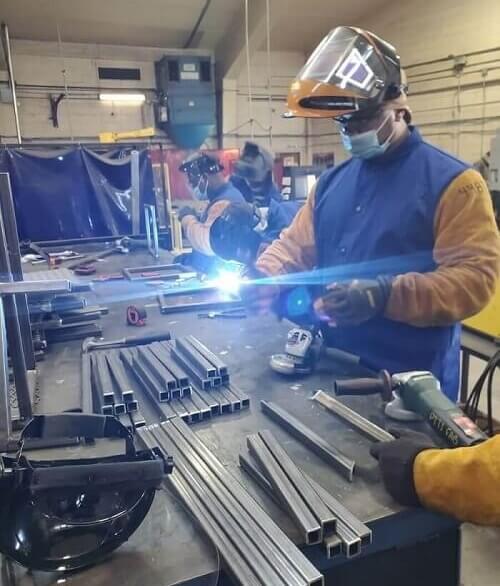Welder classes and training can open a comprehensive career path for you. Furthermore, welders utilise their knowledge and skills to bond metals together, ensuring they meet specific criteria for strength and durability. Welders are highly knowledgeable and skilled tradesmen. Welder classes offer both on-the-job training and educational pathways that lead to a successful career as a welder.
Moreover, to become a welder, you need to complete the certificate programs and apprenticeship under a qualified welder’s supervision. To compete in welder classes, you may need a high school diploma. Still, most people attend community college programs or technical schools to learn their trade and enhance their skills, and employers prefer those with certification.
Meanwhile, on-the-job experience is just as necessary, and people acquire it by working for several years as apprentices. Here are the educational qualifications you may need to become a welder.
Becoming a welder requires formal education and training. First, you may go the apprenticeship or vocational route; after that, some start their training right from high school. Although high schools offer vocational courses, they do not provide all the skills necessary to become an experienced welder.
Several training degree programs and certifications require set trainees on a professional track of welding. It takes time to become a welder and obtain all necessary certifications, depending on the specific certification and training requirements. To become a welder takes around months to 2 years, depending on the program.

Students practicing welding at PTTI Welding tech schools help you get familiar with maths and science subjects. However, schooling is not the only way to become a welder. Vocational schools and community colleges may be another route.
Additionally, the certificate program typically takes 8 to 18 months to complete. Getting the certification takes another month.
Some vocational trade schools offer short-term courses, and upon completion, you will earn a certificate. At the same time, an associate’s degree in welding technology takes two years to complete and a month for the certification. On the contrary, a bachelor’s degree in welding engineering takes four years plus one month for the certificate.
The vocational schools emphasise the following areas:-
Welding is a pathway with numerous employment opportunities, and this trend is expected to continue rising. Indeed, welders are in high demand across various industries, including automotive, aerospace, construction, and military. Nevertheless, with proper welder classes, you could have a career as a welding inspector, manufacturing welding technician, assembler, in robotics repair and maintenance, technical sales, or one of many other specialised welding areas.
Moreover, a welder will be conversant with proper interpretation and setup techniques through welding schools. They also provide you with processes meeting all the required standards demanded by the industry, along with welding Certification
Moreover, the aspirants specialise in all metal types; this only happens with good welding training programs. The Philadelphia Technology Training Institute is recognised as one of the best welding institutes worldwide. With their accredited Welding Training program, you are likely to get welding jobs.
Welding can be a rewarding career for individuals who enjoy building or repairing various hardware items or developing other welding skills. Meanwhile, welders have to do plenty of practice and training to succeed in this particular field. To pursue welding, you have to perform the following responsibilities.
The cost to become a welder depends on the school you attend and the level of welding training programs you seek. However, when you attend a trade school, you will pay between $6,000 and $15,000 and receive welding certification from renowned welding schools in Philadelphia.
When we compare a bachelor’s program of 3-4 years, the welding classes are very reasonable, depending on the school and its curriculum, which cost around $5,000 and generally last approximately seven to eight months; welding training programs are nearer to 15 months, costing on average $15,000, Promising welding Certification to upcoming Welder.
Additionally, the college offers numerous benefits; welding training is completed in a shorter time frame and at a lower cost. Most of these welders work on refineries and rigs. However, there are other opportunities available. For instance, a welder earns an average of $40 per hour, with average annual salaries of around $52,000 and $65,000, which promises a promising welding career.
Welders are in high demand worldwide. So, yes, welders do earn good money. Besides, the average salary of a certified welder is about $17.89 per hour.
And their annual salary is $42,000. In addition, B.L.S. experts say demand will increase 6% annually by 2027, among the highest demand in the manufacturing industry.
The more experience you get in this field, the further you can enhance your welding career. There are many job opportunities for welders today, and what’s essential is that you obtain the proper education. Now, as you know how to become a welder, you can start your welding journey with us at PTTI, so what are you waiting for?
Read More: